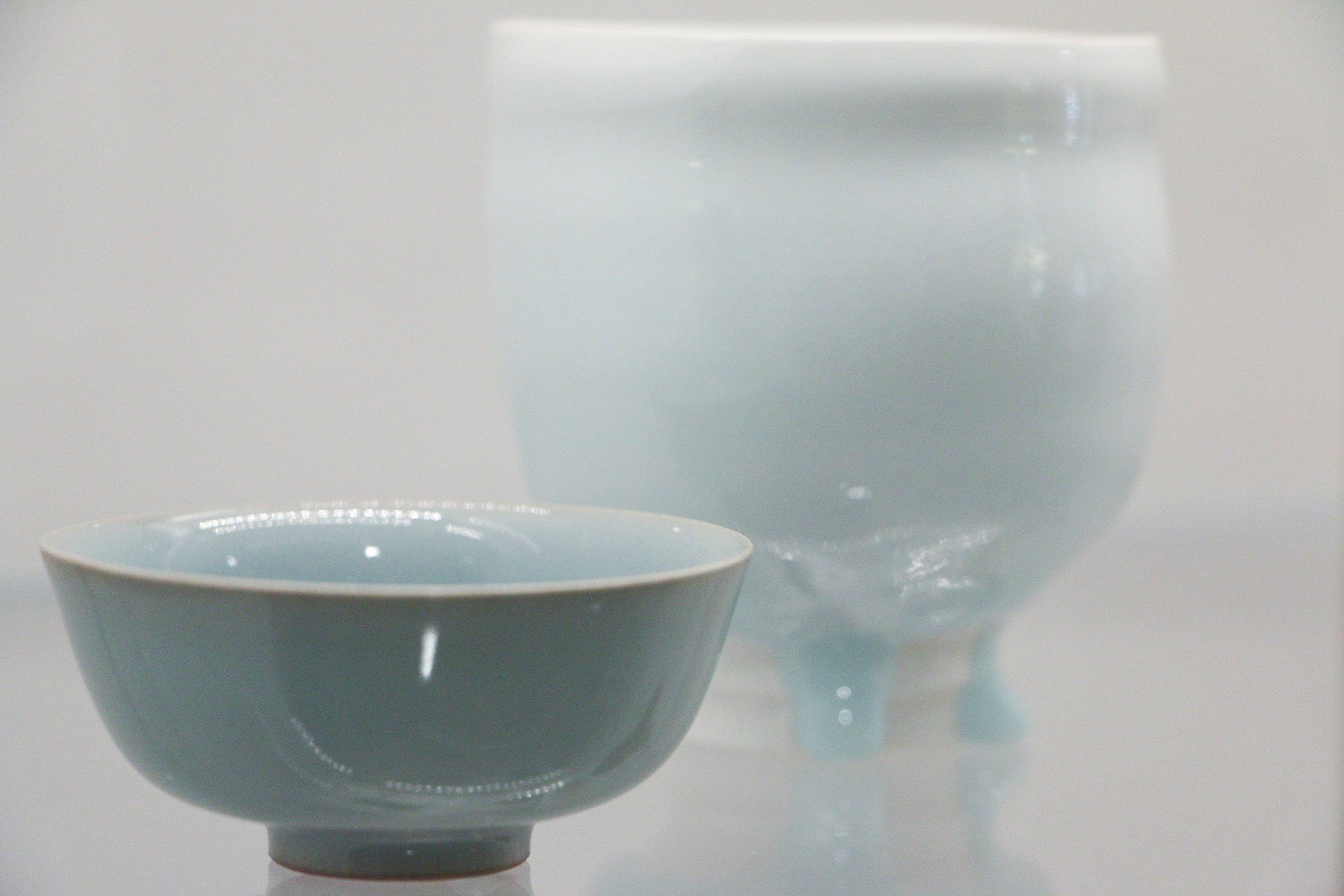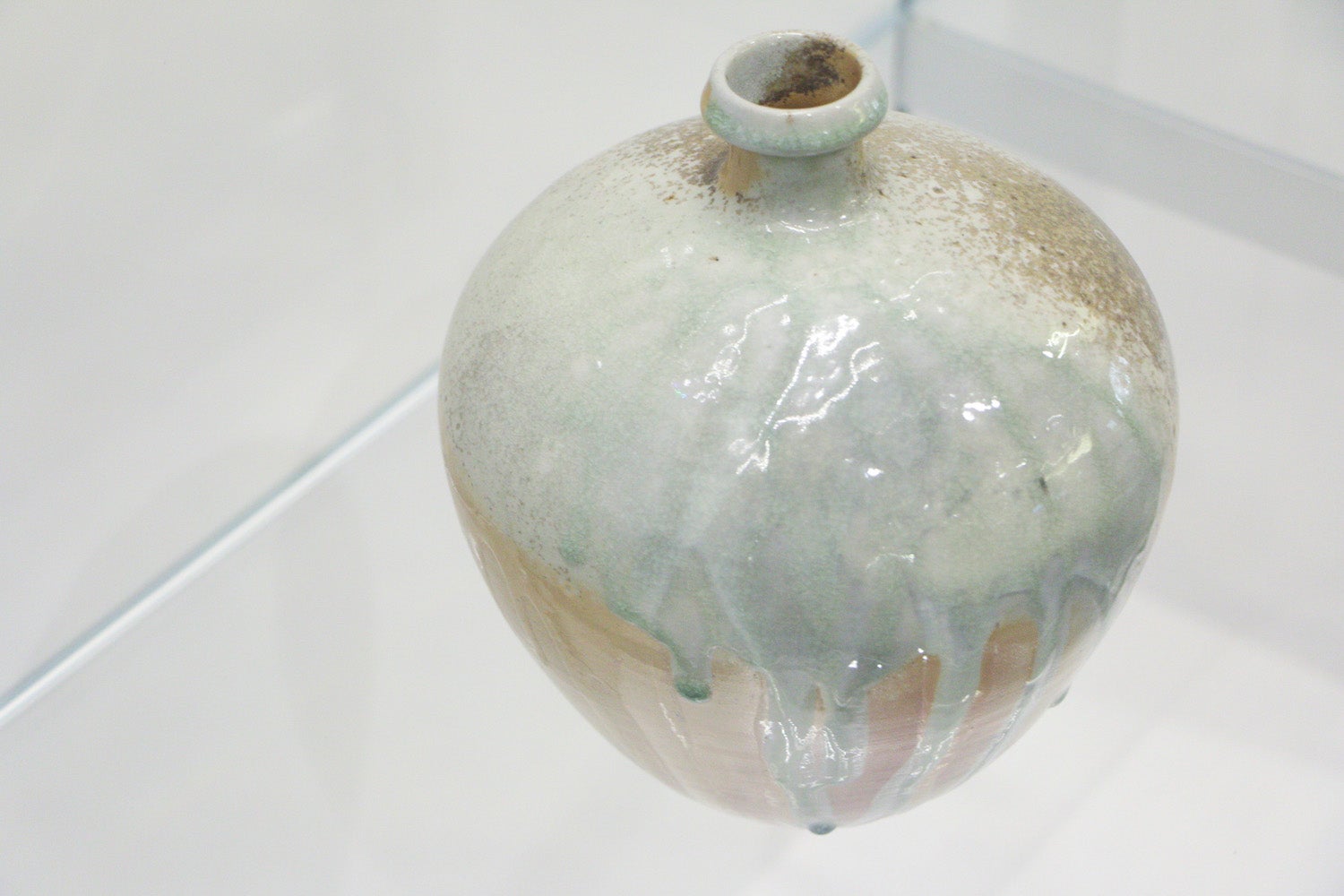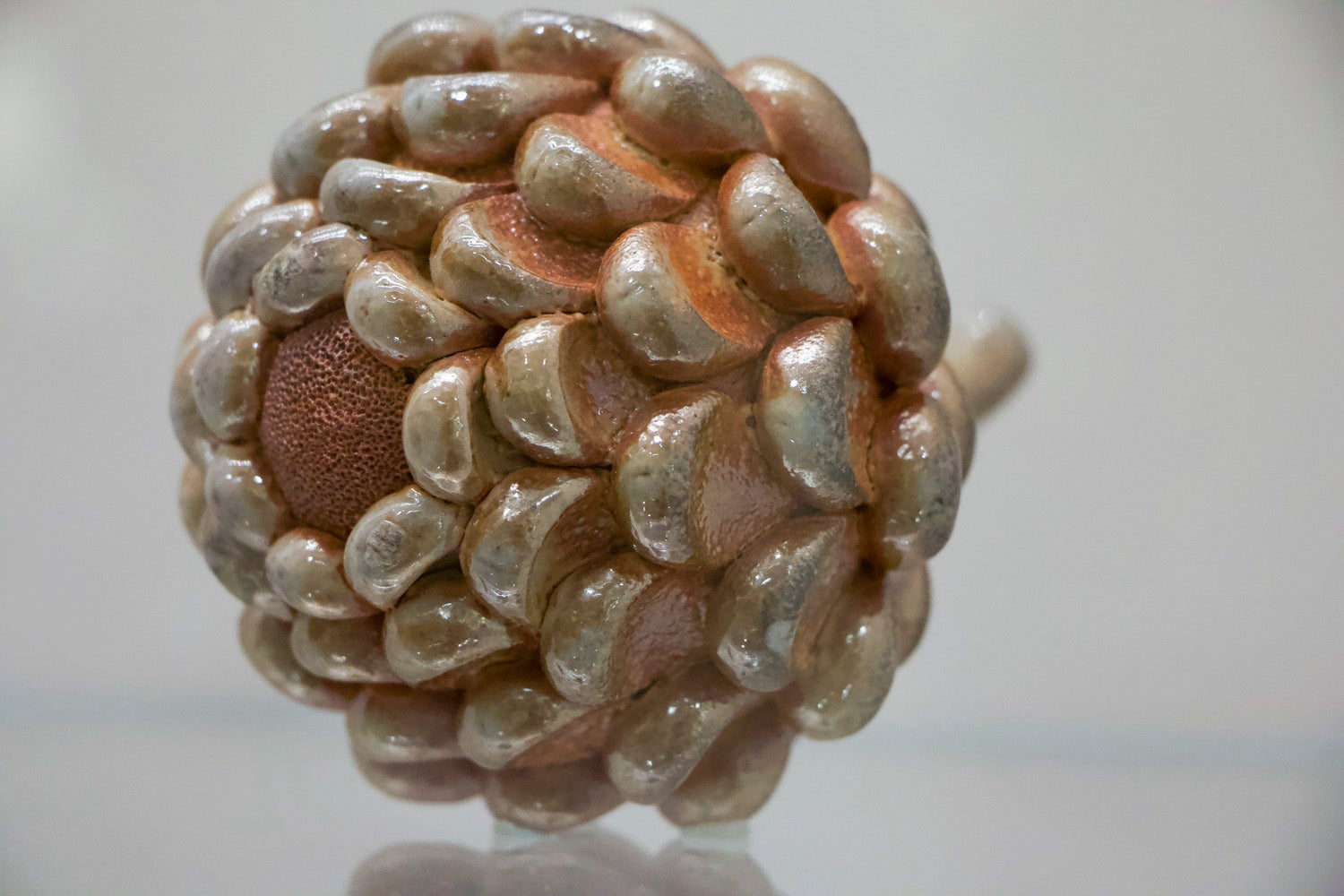A new campus ceramics exhibition that displays many works produced in wood-burning kilns – including sculptures, jars and tea sets – shows that the ceramic traditions of East Asia are alive and evolving in contemporary Japan and United States – and at Stanford.

A mere 1 percent (by weight) of iron oxide in an otherwise clear glaze formula can produce the sky- or water- blue color of celadon glazes. Sansei Suzuki crafted the traditional sake cup on the left and Kato Tsubusa produced the contemporary tea cup on the right. (Image credit: Courtesy Kendra Gladych)
The exhibition, Hand and Eye: Contemporary Reflections of East Asian Ceramic Traditions, is on view at the East Asia Library through Dec. 14 during regular operating hours. The entrance to the East Asia Library is located on the second floor of Lathrop Library, which is located on Memorial Way.
The exhibition was created in collaboration with the Center for East Asian Studies to celebrate its 50th anniversary.
In the exhibition, historic and contemporary works by Japanese, American and Stanford artists share space in lighted glass cases.
“We hope that by exhibiting them together the pieces will reveal common aesthetic ideals, which in fact, we all inherit from the East Asian ceramic tradition stretching back thousands of years,” said Hideo Mabuchi, a professor of applied physics at Stanford who helped curate the exhibition.
The exhibition includes works by nearly four dozen artists, including:
- Ceramic jars created by Nick Schwartz of Mendocino County, California, and Jack Troy of Huntingdon, Pennsylvania. The pieces demonstrate how the complex kiln atmosphere and drips of molten wood ash produce visually and texturally rich surfaces.
- A traditional sake cup created by Japanese artist Sansei Suzuki, who began making works with sky-blue “celadon” glazes after he was deeply inspired by a piece produced for the Song imperial court he viewed at the National Palace Museum in Taiwan in 1975.
- A contemporary tea cup created by Japanese artist Kato Tsubusa, whose work is defined by manipulation of a New Zealand porcelain combined with a celadon glaze. Tsubusa, who has been described as an instinctive artist, uses great physical force to manipulate a temperamental material. He can be seen at work in this Vimeo video.
Mabuchi, a longtime enthusiast and collector of ceramic art, said he was instantly hooked the first time he used a wood-burning kiln to fire pottery four years ago.
“As a scientist, when you experience the process of putting plain, unglazed clay pieces into a kiln and then see them come out of the firing with all kinds of surface color and texture, you can’t help but wonder what is going on at a chemical and physical level,” he said.

Iron contributes to the green tint of the drips on the side of this jar by Stanford alumnus Kevin Bass. (Image credit: Courtesy Kendra Gladych)
Mabuchi now uses ceramics as an example in his teaching to show students how different disciplinary perspectives – such as geology, art, physics, history and chemistry – can be brought together to appreciate a single topic of interest.
“When we use local clays and employ traditional firing methods with wood-burning kilns, we are really making a kind of art that nature offers us firsthand,” he said. “Many ceramists will talk in philosophical terms about wanting to help the clay become what it wants to be. In less mystical terms, I would say that what I most love about ceramics is the way the medium enables a maker to layer personal expression upon deep materiality.”
It is a passion Mabuchi has shared with students, including Tian Ge “Tiger” Zhou, who took Mabuchi’s course – Ceramic Art and Technology, from Ancient to Modern – while studying in Kyoto, Japan, last spring through Stanford’s Bing Overseas Studies Program (BOSP).
Zhou, who was the class assistant for the course, helped Mabuchi research artists and install pieces for Hand and Eye, which also includes photographs from class field trips.
As part of the course, the students traveled to Shigaraki Ceramic Cultural Park, which is devoted to the ancient and continuing heritage of ceramic art, and hosts ceramicists from around the world in its artist-in-residence program.

A sculpture by Victoria D’Urso, an instructor at the Stanford Online High School. (Image credit: Courtesy Kendra Gladych)
“Artists and their families opened their workshops and their homes to us,” Zhou said. “We had opportunities to view and actually walk inside of several anagama kilns – an ancient type of pottery kiln that dates back to the 5th century – and to see and touch the local clay.”
When Zhou returned to campus in the fall, she continued to explore the art form in The Expressive Vessel: An Immersive Introduction to Clay. During the course, students learned to make and to analyze functional ceramic forms, with a focus on wheel-thrown pottery.
“We immersed ourselves, literally, in the clay we worked with, as well as the process, which led us to discover more about the craft, ourselves, our relationships to our own cultures and to nature – where clays come from,” said Zhou, a junior majoring in art practice and in East Asian Studies in the School of Humanities and Sciences.
Ellen Huang, the curatorial fellow of East Asian arts at the Cantor Arts Center who helped curate Hand and Eye, said the exhibition showcases the various forms of ceramic activity in the Stanford community.
“I also hope that it tells the story of science, making, teaching and hands-on approaches to learning taking place at the university,” she said.
The Hand and Eye exhibition is sponsored by the Center for East Asian Studies, together with the Cantor Arts Center, East Asia Library, Stanford Libraries, the Ho Center for Buddhist Studies at Stanford, the Department of Art & Art History, the Department of East Asian Languages and Cultures, and the Program in Ceramic Art, Science and Culture.